Buyer coalitions and the carbon market
- April 9, 2025
Zubin Khera, Roberts Environmental Center at Claremont McKenna College

Demand-side innovation
The voluntary carbon market (VCM) is facing a severe oversupply issue, with unretired credits nearing 800 million tCO2e and issuances historically outpacing retirements by as much as 200 million tCO2e annually. While high-quality removals remain scarce, lower-integrity credits continue flooding the market.
In 2023, this contributed to a even as prices for premium credits. This imbalance has led many project developers to delay credits due to pricing and integrity concerns, further complicating market dynamics. As a result, the VCM is increasingly consolidating around buyers willing to pay a premium for vetted, high-integrity offsets, highlighting the urgent need for stronger verification standards and demand-side reforms.
In response, a new force is emerging: buyer coalitions. These alliances of companies are banding together to aggregate demand, secure high-integrity carbon credits, and send a clear market signal for quality over quantity. Tech giants like Google, Meta, and Salesforce have already pioneered such coalitions through Advance Market Commitments (AMCs), mirroring strategies previously used to accelerate vaccine development One AMC, Frontier Climate (Frontier), has facilitated over $480 million in carbon removal offtake agreements and has pledged to purchase $1 billion in credits by 2030, proving that coordinated purchasing power can reshape the market landscape.
As promising as buyer coalitions appear, they raise critical questions: Can they truly address the problem of oversupply? Will they drive meaningful climate action, or simply concentrate market power among a few large players? And perhaps most importantly, do they make sense for smaller companies that lack the financial muscle of Fortune 500 firms?
What are buyer coalitions?
In the evolving landscape of the VCM, buyer coalitions have become pivotal. These alliances consist of companies uniting to pool resources and collectively commit to purchasing substantial volumes of carbon credits.
A key mechanism employed by these coalitions is the Advance Market Commitment (AMC) which involves buyers pledging to spend a predetermined amount on goods or services that meet certain criteria, thereby guaranteeing a market for high-quality products that are still in development. This strategy has far reaching applications outside of the carbon market, with a proven track record in accelerating vaccine development, most notably through a $1.5 billion AMC launched in 2009 to fund pneumococcal vaccines for low-income countries. Backed by GAVI, the World Bank, and donor governments, this initiative ensured a guaranteed market for manufacturers like Pfizer and GlaxoSmithKline, leading to the delivery of over 230 million vaccine doses and preventing an estimated 700,000 child deaths by 2020.
By reducing financial risks for pharmaceutical firms and accelerating production, AMCs helped cut vaccine prices from $100 per dose to under $10, making them accessible in developing nations. In the context of the voluntary carbon market, coalitions like Frontier use AMCs to guarantee demand for high-quality carbon removals, giving project developers the financial security needed to scale innovative technologies and drive down costs.
Several prominent buyer coalitions exemplify this approach:
- Symbiosis Coalition: Formed by industry leaders including Google, Meta, Microsoft, and Salesforce, Symbiosis has pledged to purchase up to 20 million tons of nature-based carbon removal credits by 2030. This commitment aims to unlock high-quality ecological restoration projects.
- Frontier: Backed by companies such as Stripe, Alphabet, Shopify, Meta, and McKinsey, Frontier has established a $925 million AMC to accelerate the scale-up of permanent carbon removal technologies through 2030. Frontier’s substantial financial commitment is designed to lower the costs of emerging carbon capture solutions, making them more viable and scalable.
- LEAF Coalition: A public-private partnership that unites governments, corporations, and Indigenous communities with the goal of halting tropical deforestation by 2030. LEAF mobilizes significant financial resources to make conservation of tropical forests more economically advantageous than their destruction.
Strengths of buyer coalitions: Driving quality and market stability
A persistent challenge in the VCM has been the proliferation of low-quality credits, which undermine market credibility and dilute the impact of carbon offsetting efforts. By enforcing strict procurement criteria, buyer coalitions address this issue by only purchasing credits from projects that have rigorous greenhouse gas impact assessments, transparent reporting standards, and additional environmental or social co-benefits.
This market shift toward high-quality credits is reflected in recent pricing trends. According to Ecosystem Marketplace’s 2023 reportt, carbon credits associated with verified co-benefits now command a 78% price premium, underscoring growing buyer demand for projects that go beyond simple emissions reduction to support biodiversity conservation, community resilience, and ecosystem restoration. As a result, buyer coalitions act as quality gatekeepers, filtering out low-impact offsets and ensuring that corporate investments support long-term, verifiable climate benefits.
While buyer coalitions do not directly eliminate low-quality credits from registries, their preference for high-integrity credits creates a market disadvantage for developers producing lower-tier offsets. In response, some project developers have begun delaying credit issuances or shifting their focus to align with the new quality expectations set by coalitions like Frontier and LEAF. This shift toward prioritizing high-quality projects is exactly the kind of progress needed in the VCM to ensure credibility, impact, and long-term sustainability.
Beyond shaping supply and demand dynamics, buyer coalitions also help establish best practices and industry benchmarks, making the carbon market more accessible and transparent for buyers. One often overlooked benefit of participating in these coalitions is gaining access to expertise from experienced firms, allowing companies to streamline procurement, enhance due diligence, and develop more effective carbon credit portfolios. The BCG-EDF report highlights that while third-party verifiers once played a central role in educating less mature buyers, large-scale corporate buyers are now setting procurement standards that smaller firms can adopt, reducing uncertainty and ensuring that credit purchases contribute meaningfully to global emissions reductions.
Some companies have even sought to replicate the benefits of buyer coalitions by creating corporate funding pools to co-invest in innovative carbon removal projects without necessarily receiving credits in return. This model lowers the financial barrier for smaller corporate contributors, enabling them to participate in climate-positive investments without committing to long-term procurement contracts. By fostering knowledge-sharing and resource pooling, these initiatives democratize access to high-quality climate solutions, further strengthening the voluntary carbon market.
Will buyer coalitions become more accessible or more exclusive?
The rise of buyer coalitions is a double-edged sword for smaller companies. These coalitions could democratize access to high-quality carbon credits by pooling resources, sharing expertise, and lowering transaction costs. However, as large buyers lock in future supply through Advance Market Commitments (AMCs), they may monopolize access to the best offsets, leaving smaller players priced out or forced to settle for lower-quality credits at inflated prices.
Luckily, carbon marketplaces can serve as a valuable resource for these smaller companies seeking to hold onto their agency in purchasing credits of their choice. Platforms like Watershed offer a variety of verified high-value credits that are accessible to smaller companies, enabling them to aggregate demand and participate in AMCs. Through its partnership with Frontier, Watershed allows businesses of various sizes to access permanent carbon removal technologies, ensuring that high-quality credits are not exclusively reserved for the largest buyers.
Final thoughts
Whether buyer coalitions drive inclusivity or entrench exclusivity will depend on intentional market design. If they adopt tiered participation models, shared investment funds, or open marketplaces, they could help scale the voluntary carbon market (VCM) for all players. But if they remain closed networks catering only to the highest bidders, they risk concentrating power among a few dominant buyers, edging out smaller companies from competing.

Zubin Khera is a sophomore at Claremont McKenna College pursuing a dual BA in Economics and Public Policy. On campus, he works at the Roberts Environmental Center where he finds interest in climate technology development and energy infrastructure. He also enjoys competing on the collegiate Model United Nations circuit discussing topics surrounding sustainability and food waste.
Read our other blogs
The Role of Carbon Credits in Higher Education’s Sustainability Journey
As more colleges and universities step up their climate efforts, one question keeps coming up:…
Buyer coalitions and the carbon market: Demand-side innovation
As promising as buyer coalitions appear, they raise critical questions: Can they truly address the…
Bridging the grid gap: data center sustainability in fossil-fuel dependent regions
The world is witnessing an unparalleled surge in AI-driven technologies, revolutionizing industries from healthcare to…






